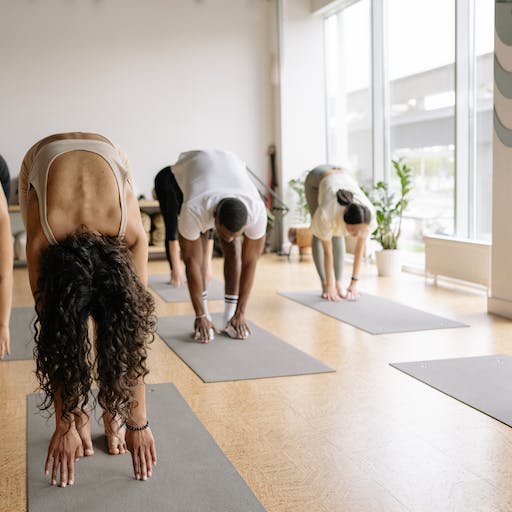guided meditation
Understanding Guided Meditation
Is independent meditation practice not sticking or progressing slowly? Adding some guided sessions could provide the necessary boost over hurdles. Guided meditation offers structured direction from a teacher, app, or recording verbal concentration to keep attention focused. Instruction both eases starting and aids refining techniques even for seasoned practitioners. Examining what defines guided practice plus evaluating available options serves as a primer if considering incorporating it into your routine.
What is Guided Meditation?
Whether physically attending a class or session, or listening to pre-recorded audio files, guided meditation involves a teacher directing your attention throughout the experience:
Teacher-Led vs. Recordings
Live, interactive sessions with a meditation guide foster asking questions to better understand techniques. Yet quality recordings offer similar benefits without the scheduling demands. Both provide external orientation helping trainees hone internal focus skills.
Benefits of Guidance
Supplemental guided sessions prime progress in these key ways:
Easier for Beginners
Guidance grants permission to relax into an experience rather than trying to force concentration. For newcomers lacking confidence, this scaffolding establishes fundamentals before attempting self-directed sits.
Expands Technique Variety
Dharma talks, corporate seminars, and podcasts open access to diverse practices like chanting sound baths, and creative visualizations you may never explore solo. Guides detail nuanced methods beyond just basic breath focus.
Boosts Motivation & Discipline
Scheduled appointments compel showing up to practice. And a teacher’s external direction overrides internal resistance. Accountability along with inspiration from peers practicing together strengthens commitment and wavers less.
Types of Guided Practice
Myriad guided meditation styles exist. From traditional to modern, common options include:
Body Scans
Here teachers systematically guide relaxing awareness through regions of physical sensation across the whole body to unwind habitual muscular tensions.
Mantra Chants
Through call-and-response verbal cueing, these sessions harness the concentrated power of chanting seed syllables, Sanskrit phrases, or meaning-rich words to enter meditative flow states.
Visualization Journeys
Vivid sensory details, evocative imagery, and even layered binaural beats prompt visualization of serene scenes, metaphysical light forms, or profound archetypes. These creatively transform consciousness.
Finding a Guide
Effective guidance requires matching training sources to individual dispositions and needs:
Live Teachers
Local studios, spiritual centers, retreat hosting sites, and online teaching platforms connect students with qualified meditation experts providing personalized sessions. Shopping teacher bios aids compatibly.
Digital Guides
Streaming audio/video content from meditation apps like Calm and Headspace offers quality guided material from recognized luminaries alongside focused lesson plans advancing practice skills steadily.
Evaluating Quality
Seeking lucid instruction conveying precise technique with care and integrity screens better than flowery content promising transformation. Let grounded wisdom speak for itself through clear transmission.
Start Your Own Practice
Those lacking direct access to expert meditation guidance can still benefit from adding some supplemental guided sessions to their independent practice:
Seek Beginner Resources
Reputable meditation blogs, podcasts, YouTube channels, and apps provide free primers introducing foundational methods to try before investing in paid programs.
Commit to Consistency
Allot set times for independent practice while also scheduling regular guided sessions via apps to prime building key concentration muscles aiding self-directed sitting.
Branch Out Independently
Gradually reduce reliance on external direction as inner focus strengthens through routine. But don’t quit guided support prematurely before habiting daily discipline lasting beyond guidance.
Conclusion
Whether working with a living mentor or digital content, guided meditation scaffolds skill-building for both beginners and veterans. Teacher cueing eases initial training wheels frustration until the stabilizing joy of practice momentum kicks in. By compelling session attendance, while expanding technical horizons, supplementation gets you safely rolling until you settle into the flow. Soon inner purpose surpasses any outer guides in steering life’s unfoldment.
FAQs
How do I find the best app for guided meditation?
Browse popular app store rankings, cross-reference reviewers’ “best-guided meditation apps” lists, and trial top contender downloads assessing teacher quality before subscribing. Let sincerely helpful guidance direct choice.
What are the main types of guided meditation?
From body scans to chanting mantras to visualizing scenes, imagery, or metaphysical forces, types range widely. But for beginners, simple breath awareness techniques remain best to establish attentional control before branching out.
Is guided meditation as effective as unguided practice?
Both confer overlapping yet distinct benefits. Guidance aids initial learning and motivation while self-directed sits build intrinsic discipline. Alternating guided and solo sessions primes progress addressing common obstacles at each phase of development.
How can I tell if my guided meditation teacher is qualified?
Competent guides exhibit strong foundational personal practice, thorough technique transmission skills and wisdom presence conveying compassion. Seek authenticity and integrity over charisma or dogma. Assess through intuition during trial sessions.
Is in-person or app-guided meditation better?
Live sessions foster asking tailored questions and community support. But apps enable easy access to diverse expert instruction. Evaluate options based on learning style, motivational needs and practice phase before determining suitability.






